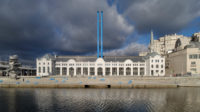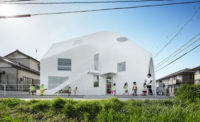New York’s Gluckman Mayner Architects is designing Pace Beijing, a major Chinese outpost for Manhattan’s PaceWildenstein gallery. It is the first major American gallery to put down roots in Beijing—a move intended to help PaceWildenstein become a prominent player in Asia’s booming art market.
The 22,000-square-foot facility will take up residence in a former munitions factory located in Beijing’s Factory 798 art district, which is already popular with local galleries. The concrete-and-brick building features a roof with a sawtooth profile and repeating clerestories that pull in natural light. “It’s a phenomenal structure, designed and built by East German engineers in the ’50s,” says Richard Gluckman, FAIA. “It anticipates the Kimbell [Art Museum by Louis Kahn] in a really elegant way.”
Gluckman says his firm’s design will “do as little as possible” to avoid spoiling the existing single-story structure. “We’re trying just to exploit the qualities of that building and make a contemporary intervention that balances the space with Pace’s program of contemporary art,” he says, adding, “We always try to achieve a balance between three things: the history, the intervention, and the use for which the space is intended.”
Pace Beijing will be Gluckman Mayner’s first built project in China, although presently the firm is also designing an art museum for Zhejiang University in Hangzhou. Gluckman says he is impressed with how quickly the project is taking shape. “With the Pace project, the thing that’s astonishing to me is the speed at which the contractors work,” he says. “Our concerns are making sure that the standards we need for this project are met, and some of the contractors in Beijing have certainly proven they can meet those standards.”
The project, which The New York Times reported is worth $20 million, will open on August 3, in time for the Beijing Olympics. The gallery’s inaugural exhibition, entitled Encounters, will feature work by artists such as Chuck Close, Alex Katz, Lucas Samaras, Tim Eitel, Zhang Huan, and Zhang Xiaogang.








Post a comment to this article
Report Abusive Comment